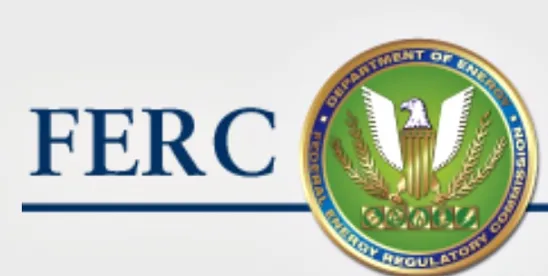Securing interconnection and transmission rights and completing related upgrades is often the longest lead-time item in an electric generator’s development timeline. At the same time, many potential new power plants are being developed and vying for access to the electric transmission grid. The policy of most grid operators is to address interconnection requests on a “first come first served” basis. As a result, developers/interconnection customers are incentivized to submit their interconnection requests as early in the development process as possible in order to save their projects’ place in line. Over the last two years, Midcontinent Independent System Operator, Inc. (“MISO”) experienced record-high interconnection requests, and yet nearly 80% of these submissions ultimately were withdrawn prior to commercial operation of the project. MISO attributed this trend to developers submitting multiple requests for the same proposed project to test (and quickly withdraw) multiple interconnection concepts, many of which the developers knew they were not going to support through the entire queue process.
In an effort to reduce the number of requests in its interconnection queue that will ultimately be withdrawn, MISO requested that the Federal Energy Regulatory Commission (“FERC”) approve revisions to MISO’s interconnection request procedures related to milestone payments and site control requirements, which revisions would place substantially higher hurdles to a potential new power plant joining MISO’s generator interconnection queue. In Midcontinent Independent System Operator, Inc., 166 F.E.R.C. ¶ 61,187 (2019), FERC rejected MISO’s request, but FERC’s ruling leaves open the possibility that it might approve a similar set of heightened requirements, so long as MISO makes modifications to its proposal to account for interconnection customers that might be disproportionately disadvantaged.
MISO proposes to make joining its generator interconnection queue substantially more difficult
The Definitive Planning Phase (“DPP”) is the final stage of MISO’s generator interconnection study process, during which MISO conducts a variety of studies that determine whether there is available transmission capacity to accommodate the interconnection of a new generation facility. There are three phases to the DPP, and MISO requires each interconnection customer to make a milestone payment prior to entering each phase (the M2 payment is required to enter DPP Phase I, the M3 payment is required to enter DPP Phase II, and the M4 payment is required to enter DPP Phase III).
As it has experienced record numbers of submissions into DPP, MISO has found it difficult to estimate network upgrade costs and to gauge cost allocations. MISO claimed that the high number of entrants artificially inflated network upgrade cost estimates, and these high estimates discouraged developers from staying in the crowded queue.
MISO hoped that its proposed revisions would discourage developers from introducing duplicate and nascent projects into the queue, improve the accuracy of upgrade cost estimates and make the queue process more efficient. MISO chiefly proposed three changes to its generator interconnection procedures: (1) stricter site control benchmarks prior to entering the queue; (2) higher M2 milestone payments; and (3) higher forfeiture rates of M2 and M3 payments.
FERC: New site control measurements do not account for some customers
MISO’s first proposed change was to raise its site control benchmarks, and in the process, lower the number of projects in the queue. MISO asserted that the current site control requirements do not incentivize customers to commit to site control early in the DPP process. MISO’s proposals were designed to require interconnection customers to make more significant commitments earlier in the process so that the projects entering the queue are more likely to be viable.
First, MISO sought to change the definition of control in its procedures, for purposes of establishing site control, such that a customer must have the “documented right to exclusive use” of the site, meaning one of the following: (1) ownership of, (2) a leasehold interest in, (3) an option to purchase or acquire a leasehold interest in, or (4) any other contractual or legal right to possess or occupy the site.
Second, MISO proposed a change to the standard for completeness of the required site control. Whereas, at present, customers only need to demonstrate 75% control of the proposed generation facility site at the start of DPP, MISO’s proposal would require 100% generation site control of a variable, MISO-proscribed acreage that is dependent on the project size and resource type (i.e. wind, solar, etc.).
Third, the proposal would also remove the option for customers to put down a $100,000 deposit in lieu of having site control for the proposed generation facility during DPP Phase II. MISO believes that many developers are willing to risk losing the $100,000 deposit on projects with less than 75% site control. Instead of the current option to deposit $100,000, MISO proposed adding an option to deposit $10,000/MW at DPP commencement, with a floor of $500,000 and a ceiling of $2 million. In addition, MISO’s proposal would limit this deposit in-lieu-of site control option to customers demonstrating that regulatory delay was preventing full site control.
FERC rejected these proposals. FERC stated that MISO’s requirement for “exclusive use” with respect to site control did not readily apply itself to situations where co-located generating facilities share sites, and it was also in conflict with facilities that operate with multiple primary fuel sources. FERC also found that MISO had not explained with sufficient specificity how it would address interconnection customer requests for exceptions to the baseline requirement for site control completeness or deposit in-lieu-of site control completeness.
Nonetheless, FERC’s reasoning leaves open the possibility that, if MISO can address these three issues (co-located facilities, multiple primary fuel source facilities, and exceptions to site control percentages), then MISO can make the site control standards in its generator interconnection procedures substantially more difficult to satisfy.
FERC: Increased amount of and risk of loss of milestone payments was improperly balanced
MISO also proposed three major changes to its current milestone payment structure, all of which were rejected by FERC.
MISO’s first proposal was to change its M2 payment amount. Currently, MISO gates entrance into DPP Phase I with an M2 milestone payment of $4,000/MW, based on the size of the project. MISO proposed revising the M2 payment so that, instead of being based on a fixed rate dependent on the project size, it would be 10% of the per megawatt average network upgrade costs of the three most recent DPP studies. FERC rejected this proposed change. Average network upgrade costs vary widely over time, from $20,000 in some DPP cycles to $300,000 in others, resulting in a milestone payment of approximately $10,000/MW. FERC was concerned that, under some scenarios, the M2 payment calculation in MISO’s proposal would cause the same customer to pay more than double the M2 amount under the present calculation. FERC found that MISO had not shown how requiring a higher, variable, and non-sub-region specific M2 payment would lead to lower rates of speculative projects, and FERC advised MISO to resubmit with such an explanation.
MISO’s second proposal was to change its milestone payment requirements to put at risk a percentage of the M2 and M3 milestone deposits, in order to make developers bear more risk when placing speculative projects in its queue. Currently, interconnection customers can receive refunds on their M2 and M3 payments if they withdraw before certain decision points in the DPP. FERC found that under the appropriate circumstances, such a change would be just and reasonable, but ultimately decided there were problems with MISO’s proposal. FERC found that the M3 milestone payments were artificially high due to the number of projects in the queue and MISO’s observed withdrawal rate of such projects. A high number of non-viable projects entering and exiting the queue leads to a variable and inflated upgrade cost estimate, which in turn leads to variable and inflated M3 payment amounts. FERC found it unfair to customers that the proposal required customers to risk forfeiting an M3 amount that they could not predict. In its decision, FERC stated that MISO would need to set a ceiling amount for M2 and M3 payments so that customers could understand what they were risking.
MISO’s third proposal was for it to retain milestone payments until a project’s commercial operation date, instead of 45 days after an interconnection agreement becomes effective, as is the current scheme. FERC rejected this proposal and stated that MISO must show how this revision would prevent overpopulation of the queue and would not result in tying up interconnection customers’ capital for an overly extended period of time.
Bottom Line
While FERC rejected nearly all of MISO’s proposals to revise its development queue process, FERC based its decision on specific and addressable concerns that it identified in its decision. Notably, FERC did not disagree with MISO’s position that its current standards ineffectively incentivize project developers and result in inaccurate cost estimates for network upgrades and an inefficient generation interconnection process. We expect that MISO will revise its proposal in order to address FERC’s concerns and will continue to pursue changes to its development queue process that will make the DPP standards substantially more difficult for potential projects to satisfy.




 />i
/>i

